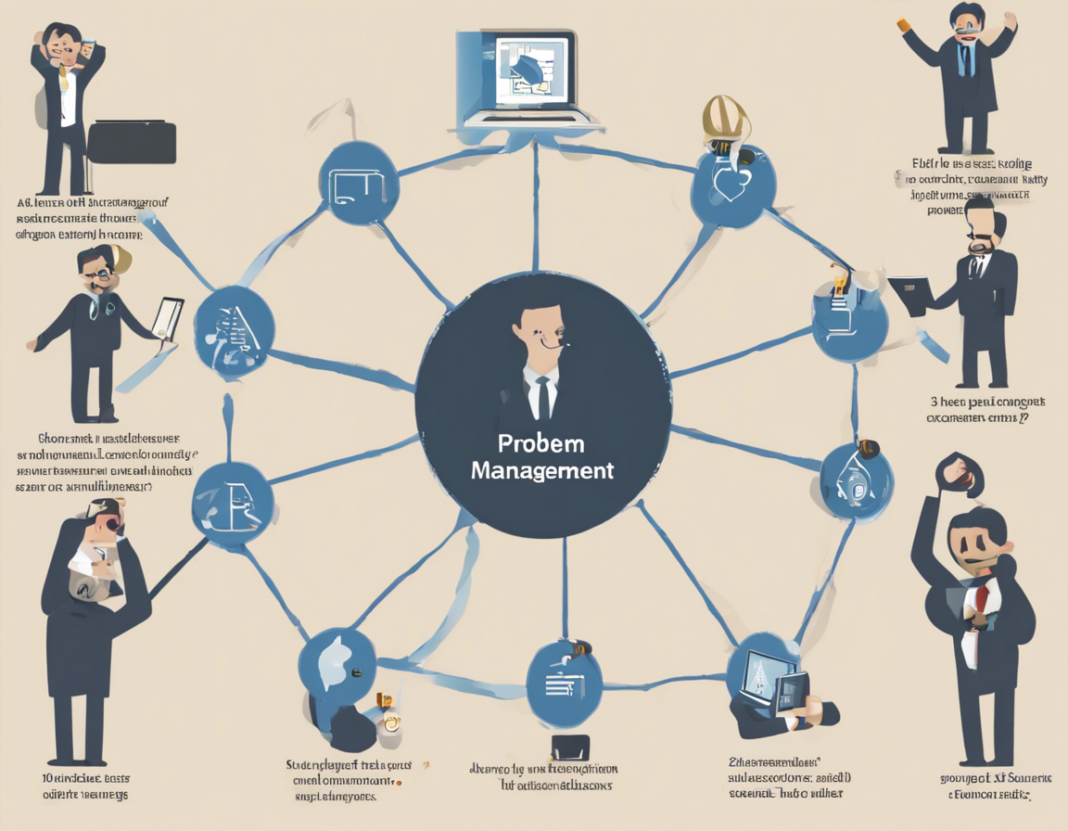Problem management is a crucial process within the IT Service Management (ITSM) framework that aims to identify the root cause of incidents and prevent them from recurring. One key aspect of effective problem management is the identification of non-sources of problem management inputs. In order to streamline the problem management process and focus resources efficiently, it is essential to understand what does not constitute valid inputs for problem management. This article will delve into the concept of non-sources of problem management inputs, provide insights into common misconceptions, and offer best practices for effectively managing problems in an IT environment.
What are Non-Sources of Problem Management Inputs?
Non-sources of problem management inputs refer to information, events, or activities that are not relevant or suitable for initiating or driving the problem management process. These non-sources can often lead to confusion, misallocation of resources, and delays in resolving underlying issues. By identifying and excluding non-sources of problem management inputs, organizations can focus on actionable data and insights that will contribute to the successful identification and resolution of problems.
Common Misconceptions about Problem Management Inputs
Incidents
While incidents are a key component of the ITIL framework, it is important to differentiate between incidents and problems. Incident management focuses on restoring services as quickly as possible, whereas problem management aims to identify and address the root cause of recurring incidents. Therefore, incidents in themselves are not considered valid inputs for problem management.
Service Requests
Service requests, such as password resets or access requests, are typically handled through a separate process known as request fulfillment. These routine operational tasks are not considered problems unless they reveal underlying issues that require problem management intervention. Therefore, service requests should not be treated as inputs for the problem management process.
Known Errors
Known errors are issues that have been identified and documented within the IT organization. While known errors play a vital role in problem management by providing insights into recurring issues, they should not be mistaken as the sole source of problem management inputs. Problem management requires a proactive approach to identifying and addressing underlying causes, rather than simply reacting to known errors.
Best Practices for Identifying and Managing Non-Sources of Problem Management Inputs
Establish Clear Criteria
Define clear criteria for what constitutes a valid input for the problem management process. This may include recurring incidents, widespread outages, significant business impact, or trends indicating underlying issues. By establishing predefined criteria, organizations can avoid confusion and ensure that resources are focused on high-priority problems.
Educate Stakeholders
Provide training and guidance to stakeholders across the organization to help them differentiate between incidents, service requests, and problems. By increasing awareness of the distinctions between these categories, teams can effectively channel issues to the appropriate processes and prevent non-sources from cluttering the problem management pipeline.
Implement Automation
Utilize automation tools and technologies to streamline the identification and classification of problem management inputs. Automated incident categorization, trend analysis, and data correlation can help separate genuine problems from noise and reduce the risk of including non-sources in the problem management workflow.
Conduct Regular Reviews
Schedule regular reviews of potential inputs to the problem management process, including known errors, incident trends, and service request data. By continuously evaluating the relevance of these inputs, organizations can adapt their approach to problem management and ensure that resources are allocated efficiently to address underlying root causes.
Key Takeaways
- Non-sources of problem management inputs refer to information, events, or activities that are not suitable for initiating or driving the problem management process.
- Common misconceptions about problem management inputs include incidents, service requests, and known errors, which should be differentiated from genuine problems.
- Best practices for managing non-sources of problem management inputs include establishing clear criteria, educating stakeholders, implementing automation, and conducting regular reviews.
Frequently Asked Questions (FAQs)
1. What is the difference between incidents and problems in ITIL?
In ITIL, incidents refer to disruptions in service that need to be resolved quickly, while problems are the underlying causes of these incidents that require investigation and resolution to prevent recurrence.
2. Can service requests be considered inputs for problem management?
Service requests are typically handled through request fulfillment processes and are not directly related to the identification and resolution of underlying issues, making them non-sources of problem management inputs.
3. How can organizations differentiate between incidents and problems?
Organizations can differentiate between incidents and problems by focusing on restoring services for incidents and identifying and solving root causes for problems to prevent future incidents.
4. Why is it important to identify non-sources of problem management inputs?
Identifying non-sources of problem management inputs is crucial to prevent confusion, misallocation of resources, and delays in resolving underlying issues, ensuring that problem management efforts remain focused and effective.
5. How can automation help in managing non-sources of problem management inputs?
Automation tools can assist in streamlining the identification and classification of problem management inputs, separating genuine problems from noise, and enhancing the efficiency of the problem management process.

